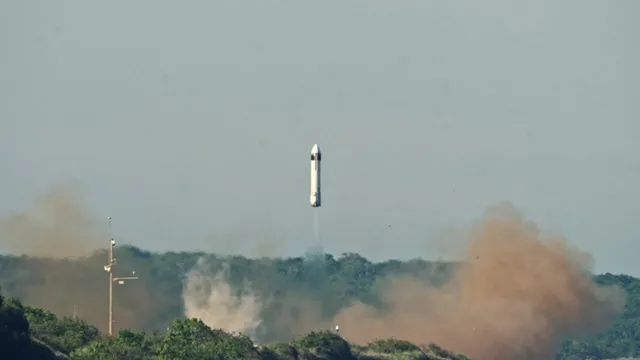
Honda successfully tests reusable rocket in major space industry move
2025-06-18 00:00- Honda successfully tested a prototype reusable rocket during a launch and landing test on June 17, 2025.
- The rocket reached an altitude of 889 feet (271 meters) and landed close to its target after the flight.
- This development aligns with Honda's goal to achieve suborbital spaceflight by 2029, indicating a strategic move into the space sector.
Express your sentiment!
Insights
In Japan, Honda has started making significant strides into the space sector by successfully testing its prototype reusable rocket. The test flight occurred on June 17, 2025, at a facility in Taiki, Hokkaido, and marked an important milestone as Honda aims to achieve suborbital spaceflight by 2029. The prototype rocket, measuring approximately 20.6 feet (6.3 meters) tall, was launched and subsequently landed just 37 centimeters from its intended landing spot after reaching an altitude of 889 feet (271 meters). This event underscores the car manufacturer's commitment to diversifying its technological capabilities beyond automotive engineering. The launch and landing test is a part of Honda's broader initiative to harness and apply technologies cultivated through its automotive innovations, especially in areas such as automated driving systems. By venturing into reusable rocket technology, Honda aims to position itself in a rapidly expanding satellite launch market that anticipates growing demands for satellite-based communication and environmental monitoring solutions. The company envisions that its rockets could play a crucial role in establishing infrastructure for advanced data systems in outer space. As demand for satellite launches is slated to rise due to the increasing need for global communications and environmental oversight, Honda's entry into this arena is not without significant competition. Other notable entities, including Elon Musk's SpaceX and the Japan Aerospace Exploration Agency, are also working on their own rocket technologies. SpaceX is well-known for its pioneering reusable rocket systems, leading the industry in innovation. Meanwhile, Japan's aerospace agency has set its sights on launching the H3 rocket, which, while not reusable, is a key player in the satellite launch sector. The recent success of Honda’s test flight signifies its proactive approach to exploring new frontiers in space technology. Given the fluctuations in the space launch industry and the emergence of numerous startups, including Space One in Japan, Honda's entry could lead to exciting developments that not only benefit the company but also contribute to global advances in satellite technology and environmental monitoring.
Contexts
The future of satellite communication systems looks promising, driven by advancements in technology and a growing demand for connectivity across the globe. With the increasing reliance on data-driven applications and the expansion of the Internet of Things (IoT), satellite communications are expected to play a crucial role in bridging the digital divide, particularly in remote and underserved areas. Low Earth Orbit (LEO) satellites are leading this revolution due to their ability to provide lower latency and higher bandwidth compared to traditional geostationary satellites. Companies like SpaceX with its Starlink constellation and OneWeb are pioneering this field, offering competitive broadband services that can reach users who previously had limited access to reliable internet connections. This trend indicates a shift towards a more interconnected world, with satellite systems capable of supporting real-time data transmission and enhancing global communications infrastructure. Moreover, the development of advanced technologies such as phased array antennas and frequency reuse systems are enhancing the efficiency and capability of satellite networks. The integration of artificial intelligence (AI) in satellite communications is set to optimize network management, monitor performance in real-time, and predict maintenance needs. These innovations allow for more resilient communication channels that can adapt dynamically to changing conditions. The increased capabilities of satellites are not only improving internet services but are also enabling advancements in critical applications such as telemedicine, remote education, and emergency response, contributing significantly to societal development and resilience. As we look towards the future, regulatory frameworks will play a vital role in shaping the evolution of satellite communication systems. International cooperation will be essential to manage the space environment, minimize debris, and allocate frequency spectrums effectively. The challenge of space congestion will need to be addressed, particularly as constellations of thousands of satellites are deployed. Policy development will also necessitate a balance between encouraging innovation and ensuring safety, security, and equitable access to satellite services worldwide. Stakeholders, including governments, private companies, and international organizations, must collaborate to create guidelines that foster a sustainable and fair satellite ecosystem. In conclusion, the outlook for satellite communication systems is bright as they become integral to the infrastructure of a globalized society. With continued innovation and strategic planning, satellite networks will enhance connectivity, enabling robust communication channels that support economic growth and social development. This evolution promises to transcend geographical limitations, bringing digital access to remote communities, fostering inclusivity, and empowering individuals and businesses alike in the digital age.